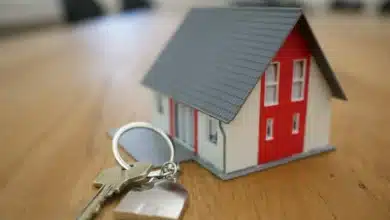How To Choose The Perfect Size House In Australia
The Perfect Size House In Australia
Choosing the right size house in Australia can be a daunting task. With an average home size of 242 square meters, it’s easy to feel overwhelmed by the sheer magnitude of options available.
In this article, we simplify this process for you, providing detailed insights on factors to consider while making your decision and how to balance size with efficiency. Ready? Let’s dive into finding your perfect Australian home.
Factors to Consider When Choosing the Size of Your House
Consider the average house size in Australia, your household size and composition, as well as your lifestyle and personal preferences, to determine the perfect house size for you.
Average house size in Australia
Australia is home to some of the largest houses in the world, with an average size of 243 square meters. In recent years, there has been a slight increase in size from 186.3 square meters in 2019-2020 to a current average house size of 242 square meters in 2021, according to ABS statistics.
It’s also common for newly built houses on the market today to feature floor plans of up to 248 square meters on blocks measuring approximately 467 square meters. These figures make clear that Australians value spacious living and tend to opt for considerably larger homes compared to other countries worldwide.
In Australia, people often consider the visibility of their house number from the street as well when picking out a new place, aiming for numbers that can be easily read from afar for easy identification and safety reasons.
A three-bedroom house is commonly measured by its total area in square meters here, too – further indicators that overall space and comfort take precedence when Aussies are shopping around for their perfect home.
Household size and composition
The size of your household and its composition is an important factor to consider when choosing the right-sized house in Australia. The number of people living in your home will determine how many bedrooms are needed and the amount of living space required.
It’s also essential to think about any specific needs or preferences that your family may have. For example, if you have young children, you might need extra play areas or a yard for them to run around in.
On the other hand, if you have older parents living with you, accessibility and safety considerations become crucial factors to take into account.
When considering household size and composition, it’s important to keep in mind that Australian homes tend to be larger compared to homes in other countries. This preference for spacious living spaces means there are plenty of options available when it comes to finding a house that suits your family’s needs.
Lifestyle and personal preferences
Your lifestyle and personal preferences play a crucial role in determining the right size of your house in Australia. Consider how you and your family live on a day-to-day basis. Do you enjoy hosting gatherings and need ample space for entertaining? Or perhaps you prefer cozy, intimate settings that prioritise comfort over grandeur.
Think about how much time you spend indoors versus outdoors and whether you value having extra room for hobbies or activities. Additionally, consider if you have any specific needs or requirements, such as dedicated office space or room for exercise equipment.
Taking all these factors into account will help ensure that the size of your house aligns with your unique lifestyle and personal preferences.
Australia’s homes tend to be larger compared to homes in other countries, indicating a preference for spacious living spaces. However, it’s important to remember that bigger doesn’t always mean better if it doesn’t meet your individual needs and preferences.
Future needs and plans
Considering your future needs and plans is a crucial factor when choosing the size of your house in Australia. As you think about the ideal house size for your family, it’s important to take into account how your needs may change over time.
Will you be expanding your family? Do you anticipate needing additional space for a home office or hobby room? By considering these factors, you can ensure that the house you choose will continue to meet your needs well into the future.
While it’s impossible to predict exactly what may happen in the future, having an idea of your long-term goals and plans can help guide your decision-making process. Whether it’s accommodating a growing family or creating space for new hobbies and interests, thinking ahead allows you to select a house size that will support and enhance these aspirations.
How to Determine the Right Size House for Your Family?
When determining the right size house for your family, consider factors such as number of bedrooms, living space, storage needs, and outdoor amenities. Keep reading to ensure you choose the perfect size house in Australia.
Number of bedrooms
The number of bedrooms is an important factor to consider when choosing the size of your house in Australia. It’s crucial to think about the sleeping arrangements for each member of your family and any future plans, such as having more children or accommodating guests.
The average size of a 3-bedroom house in Australia is commonly measured in square meters. By determining the ideal number of bedrooms, you can ensure that everyone has their own space and comfort within the home.
Having enough bedrooms also allows for flexibility and adaptability over time. Whether it’s creating a dedicated workspace or transforming a room into a play area, additional bedrooms provide opportunities for customisation based on your family’s evolving needs.
Living space and common areas
The size of the living space and common areas in a house is an important factor to consider when determining the right size for your family. These areas serve as gathering spaces where you can relax, entertain guests, and spend quality time together.
It is crucial to ensure that there is enough room for everyone to comfortably move around and engage in activities. Additionally, having spacious common areas allows for flexibility in furniture arrangement and gives your home an open and inviting feel.
Consider how much square footage you need for a comfortable living room, dining area, and any other communal spaces that are important to you and your family’s lifestyle.
Storage and functional needs
Consider your storage and functional needs when determining the right size house for your family. Adequate storage is essential to keep your home organised and clutter-free. Think about how much space you require for storing items like clothing, furniture, kitchenware, and other belongings.
Additionally, consider the functionality of each room in relation to your lifestyle. For example, do you need a dedicated office space or a playroom for your children? Evaluate these factors to ensure that the house size you choose meets both your storage requirements and functional needs.
Outdoor space and amenities
Outdoor space and amenities play a vital role in determining the ideal size of a house in Australia. Having access to outdoor areas such as a backyard or patio provides opportunities for relaxation, entertaining guests, and engaging in outdoor activities.
Considerations such as the size of the yard, the presence of a garden or pool, and the availability of recreational spaces nearby are important factors to think about when selecting your house size.
Additionally, amenities like BBQ areas or outdoor kitchens can enhance your living experience and provide additional functionality to your outdoor space. Ensuring that you have enough room for these features will contribute to creating your perfect home environment.
The Impact of House Size on Cost and Maintenance
Choosing a smaller house can result in lower construction and purchase costs, as well as reduced utility and maintenance expenses.
Construction and purchase costs
The cost of constructing or buying a house is directly related to its size. Larger houses will require more materials for construction and hence, increase the overall cost. Similarly, the purchase costs of larger houses are generally higher.
These costs, however, may vary based on a number of factors, including location, type of construction, and market demand. It’s important to compare these costs with your budget and to choose the perfect size house for you in Australia.
Utility and maintenance expenses
Utility and maintenance expenses can have a significant impact on the cost of owning and maintaining a house. These ongoing costs include electricity, water, gas, internet, and other utilities that are essential for daily living.
Additionally, regular maintenance tasks such as cleaning, repairs, landscaping, and pest control also contribute to the overall expenses. It’s important to consider these costs when choosing the size of your house in Australia because larger homes typically require more resources to maintain and higher utility bills.
By opting for a smaller or more efficient size house, you can potentially save on utility and maintenance expenses over time while still enjoying comfortable living conditions.
For example, energy-efficient appliances and insulation can help reduce electricity bills, while choosing low-maintenance materials for your home exterior can minimize upkeep costs.
Environmental considerations
Consider the environmental impact when choosing the size of your house in Australia. Larger homes require more energy for heating and cooling, resulting in higher utility bills and increased greenhouse gas emissions.
Opting for a smaller, more efficient home can help reduce your carbon footprint and save money on energy costs. Additionally, smaller homes generally have less construction waste and use fewer materials during the building process.
By considering the environment when selecting your house size, you can make a positive contribution to sustainability efforts while enjoying a comfortable living space.
Balancing Size and Efficiency
Creating a home that is both comfortable and efficient requires smart design, flexible layouts, energy-efficient features, and sustainable building materials. Discover how to strike the perfect balance in this section.
Smart design and space optimisation
Smart design and space optimisation are essential considerations when choosing the size of your house in Australia. By utilising clever design techniques and maximising space, you can make the most of every square meter.
This includes incorporating multifunctional rooms and flexible layouts that can adapt to your changing needs over time. Energy-efficient features, such as good insulation and efficient appliances, can also help minimize wasted space and reduce utility expenses.
Additionally, using sustainable building materials not only benefits the environment but can also contribute to a more durable and low-maintenance home.
Ultimately, by prioritising smart design principles and optimising space usage, you can create a comfortable and efficient living environment tailored to your family’s needs without compromising on functionality or aesthetics.
Multifunctional rooms and flexible layouts
Multifunctional rooms and flexible layouts are key considerations when choosing the size of your house in Australia. These features allow you to maximise the use of space and adapt it to different needs.
With a multifunctional room, you can have an office during the day and convert it into a guest bedroom at night. Flexible layouts enable you to rearrange furniture or remove walls to create larger spaces for gatherings or accommodate changing family dynamics.
By incorporating these design elements into your home, you can optimise functionality and make the most out of every square meter.
Energy-efficient features
Energy-efficient features are essential considerations when choosing the right-sized house in Australia. These features can help reduce energy consumption and lower utility bills while also contributing to a more sustainable lifestyle.
Look for homes that have efficient appliances, such as ENERGY STAR-rated refrigerators, dishwashers, and washing machines. Additionally, houses with good insulation and double-glazed windows can help maintain a comfortable temperature indoors without relying heavily on heating or cooling systems.
Installing solar panels can further enhance energy efficiency by harnessing renewable energy sources. By prioritising these features, you can save money on utility costs and reduce your carbon footprint.
Sustainable building materials
Sustainable building materials play a crucial role in choosing the right size house. By using eco-friendly materials, homeowners can minimise their environmental impact and contribute to a greener future.
Some popular sustainable options include recycled timber, bamboo flooring, and low VOC (volatile organic compound) paints. These materials are not only better for the planet but also promote healthier indoor air quality for residents.
Additionally, using sustainable building materials can help reduce ongoing maintenance costs as they tend to be more durable and require less frequent repairs or replacements.
Embracing sustainability in construction is an important consideration when selecting the perfect size house in Australia.
FAQs
How can I choose the perfect size house in Australia?
To determine the ideal house size in Australia, consider factors like the family’s needs and the layout of the house, and compare house sizes in your desired area.
What is an average-sized house in Australia?
The average floor size of an Australian home varies; however, a common-sized home might include three bedrooms, with each room having its specific square meters.
Is there a tool to help me decide on what would be my ideal home size?
Yes, you could use a House Size Calculator that is available online for Australians to calculate the optimal number of bedrooms and land requirements for different house sizes according to their lifestyle and needs.
Do rising housing prices mean smaller spaces in houses?
Rising housing prices have led some builders to create smaller spaces; however, selecting the optimal size for your requirements depends more on personal preference rather than market trends.
Are safety considerations necessary when determining the right-sized house?
When deciding on your perfect-sized residence, do take into account safety considerations such as easy evacuation routes, which depend heavily on a property’s layout and overall dimensions
Are there any tips for choosing an ideal Australian home size?
Consider comparing various residential properties’ bedroom count and total square meterage while keeping individual or familial space requirements central: this will help figure out how to determine the best-suited dwelling specifically tailored towards garnering maximum satisfaction from inhabitants’ lifestyles.
Conclusion
Choosing the perfect size house in Australia involves considering factors such as household composition, lifestyle preferences, and future needs. Determining the right number of bedrooms, living space, and storage is crucial for meeting your family’s requirements.
It’s also important to balance size with efficiency by incorporating smart design features and energy-efficient elements into your home. By carefully considering these factors, you can ensure that you find a house size that perfectly suits your needs and enhances your quality of life.
If you enjoyed this article, read our latest: Good design guides high-quality social housing






